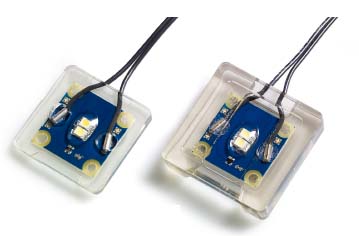It comes as no surprise that a large proportion of consumer electronic products are made from plastic materials. Casings, boards and data storage materials are made of polymer to ensure that while they are tough and durable, they are mobile, and lightweight too. The consumer electronics sector is a major market for engineering plastics since this sector demands materials that exhibit dimensional stability, heat and chemical resistance, high strength and unique properties. Various engineering plastics have replaced metals in end-user industries.
According to the report "Engineering Plastics Market - Trends & Forecasts (2013- 2018)", global engineering plastics market is expected to reach $79 billion by 2018.
SABIC Innovative Plastics has always supported the use of polymers in the electronics industry and supplies a range of thermoplastics resins for this sector considering quality and innovation. Sony Ericsson Mobile Communications chose one of SABIC's resins to add final touches to its T610, offering features such as high impact and chemical resistance, infrared transparency and daylight block. Sony Ericsson's Industrial Designer Erik Ahlgren said, "Aluminium panels, anodized with colour themes that resemble the elements of nature, caught between darkness and light." Sony Ericsson offers feature-oriented mobile phones, accessories, PC cards and M2M solutions.
ENGEL, manufacturer of plastics injection moulding machines said that the company has been using a lot of PC and PC Blends like ABS/PC and PMMA. Commenting on the benefits of plastics in consumer electronic products, Heinz Rasinger, Vice President of the Teletronic's business unit at ENGEL commented, "Plastic is often injection-moulded and can be shaped into almost any design.
Plastic cases are lightweight, improving the portability of these devices. They can be easily decorated via printing, IML or IMD processes which gives these devices an appealing look so people like to buy them. Generally, these materials also show a low level of interference with wireless signals, so they are well-suited to provide good telecom connections."
Demand in the consumer electronics industry fuels improvement in both materials and processing techniques. Mr. Rasinger adds, "The consumer electronics industry is definitely one of the top users of plastics material. With around 2.3 billion mobile devices (which include mobiles, notebooks and tablets) and ca. 250 million flat screens that were sold in 2014, the consumer electronics sector is estimated to be amongst the top 5 users of plastics and plastic materials. The biggest user is certainly the packaging industry followed building and automotive industry. Amongst the consumer electronic products, flat screens for TV's and monitors are certainly the biggest users of plastic material considering the size of the flat screens that have gone up tremendously followed by portable PC's and mobiles."

Mr. Heinz Rasinger, Vice President of BU Teletronics, ENGEL
Intensified R&D
Rising demand for consumer electronics such as data storage devices such as CDs, DVDs and discs have spurred the demand of building blocks such as polycarbonate diols market. They are good insulators, heat resistant, flame retardant and flexible which makes them highly desirable for gadgets.
Growing electronics, automobile, aerospace, building and construction sectors will make the demand for polycarbonate diols grow further. International companies have stepped up their research and innovation to create new building blocks and polymers for consumer electronic products. PolyOne, the US additives group, also suggested that it will spur its GLS thermoplastic elastomers for growth in the consumer electronics market to ensure wear and tear of highly-used products while Solvay introduced Ocalio™cellulose acetate bio-plastic made from wood pulp, totally non-toxic in nature with a much less CO2 manufacturing footprint when compared to other products.
Regarding the product, Marc Michels, Marketing Director, Solvay Acetow said, "Solvay has over a century of experience developing and manufacturing commodity and high performance specialty plastics and polymers and the addition of bio-plastics is a natural progression. Our company's renewable chemistry platform studies the potential of bio-based chemistry with the objective of identifying opportunities for improving, advancing, and expanding Solvay's existing product offering to meet consumer's demanding expectations in an evolving society."
ARBURG, one of the leading global manufacturers of injection moulding machines for plastics processing, considers plastic as a versatile, lightweight base material whose properties can be adapted to the application at hand, offering freedom in product design and easy processing in injection moulding. The multi-component process, the overmoulding of inserts and process combinations open up wide-ranging options for manufacturing high-quality electronic products. The hotmelt process is another example of how electronic components or connectors can be reliably protected against moisture and splash water.
Dr. Thomas Walther, Head of Application Technology of Arburg stressed, "Most typical entertainment electronics products – from smartphones and DVD players to games consoles – are made from plastic or contain important plastic components. The electronics sector is an important industry for Arburg, alongside automotive, medical, optical, packaging and technical injection moulding. Overall, we see great potential in the three C's of the electronics industry – computers, communication and consumer electronics.
Automated processes enable cost-effective, high quality mass production." The broad variety of electronic products – from housings with decorated surfaces and inserts through to sensors comprising several components – is matched by the demand for their cost-efficient manufacture. Arburg's modular machine range can be specifically tailored to the individual application. The production processes can be transparently managed using the freely programmable Selogica control system. Vertical, rotary table and multi-component machines with ergonomic clamping units and flexible injection unit arrangements in particular are predestined for the electronics industry and can be integrated in turnkey solutions as necessary. The trend towards automation also continues, enabling increased process stability, availability, output and part quality.
Arburg demonstrated the hotmelt process, ideal for providing a seal to overmould products where electronic components and connectors must be protected against water. Such components are produced on a vertical Allrounder 275 V. Hotmelt is an injectable adhesive where particular processing conditions must be taken into account to create highquality components. The special flow characteristics of the hotmelt material ensure that the entire overmoulded component is completely sealed.
Polylactic acid (PLA) plastics offer performance compared to polypropylene (PP) and ABS. So for applications like mobile phones, laptops, games consoles and tablets, PLA plastics is better with regards to scratch, heat and UV resistance and colourability. Corbion Purac partner SUPLA has developed PLA blends that offer improved service. For consumer electronics, PLA offers to help create biobased products with less carbon footprint, which holds the option of being mechanically recycled at the end of their lifespan. SUPLA tied up with Taiwanese electronics OEM, Kuender which collaboratively developed PLA blends that were deployed in the electronic housing of the world's first bioplastic computer.

ARBURG hotmelt process is ideal protection of electronic components and connectors.
Nike Zoom Flight Bonafide
 iConnectHub
iConnectHub
 Login/Register
Login/Register Supplier Login
Supplier Login


























